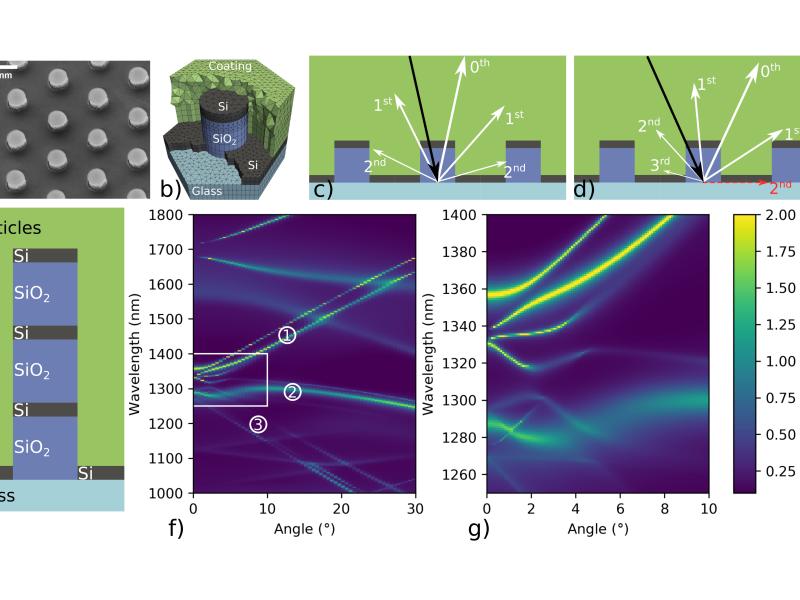Photon up-conversion is a process that converts two lower energy photons into a single higher energy photon. This can be used to for highly accurate bioassays, therapeutic applications and increasing the efficiency of solar energy devices. However, photon up-conversion needs high light intensities due to its non-linear nature. It has already been demonstrated that certain surfaces with optical resonances can locally increase the light intensity, thereby improving up-conversion efficiency. In a research article published in APL Photonics, an interdisciplinary team from the Helmholtz-Zentrum Berlin (HZB), Ben-Gurion University of the Negev and the Zuse Institute Berlin (ZIB) investigated whether multiple layers of surface structuring could improve the up-conversion process.
Using a combined approach of electromagnetic simulations performed at ZIB and experiments performed at both HZB and Ben-Gurion University, the researchers were able to demonstrate a 2.7 fold up-conversion signal enhancement using only 1% of the available up-converting material. Simulations indicated that by increasing the amount of layers of surface structuring, a broadband response could be obtained. This broadband enhancement could help pave the way for enhancements in solar energy conversion.
The project results from collaboration within the networks SOLARMATH, MATH+, and the Joint Lab BerOSE. The research was chosen by the editors of APL Photonics as Featured manuscript, and was highlighted in a SciLight article.
Link to the publication:
Double-layer metasurface for enhanced photon up-conversion.
Link to the SciLight article on this research:
Double-layer metasurface boosts photon up-conversion.
